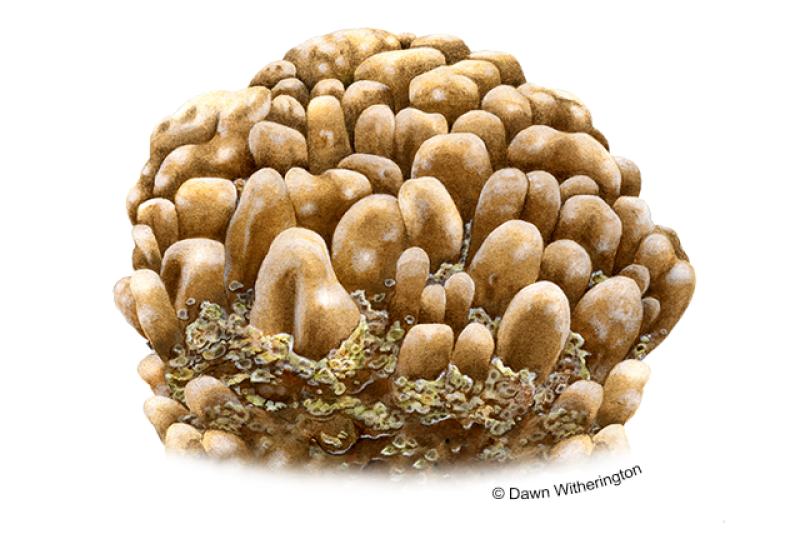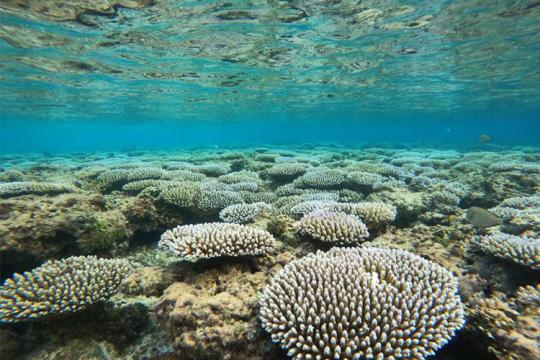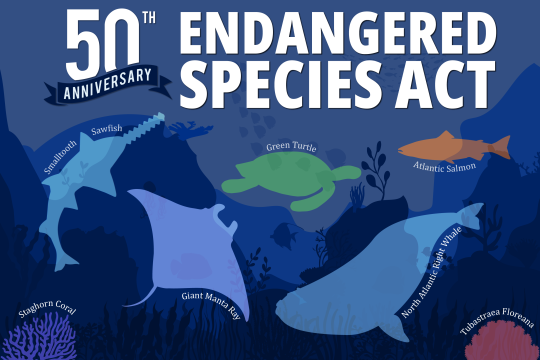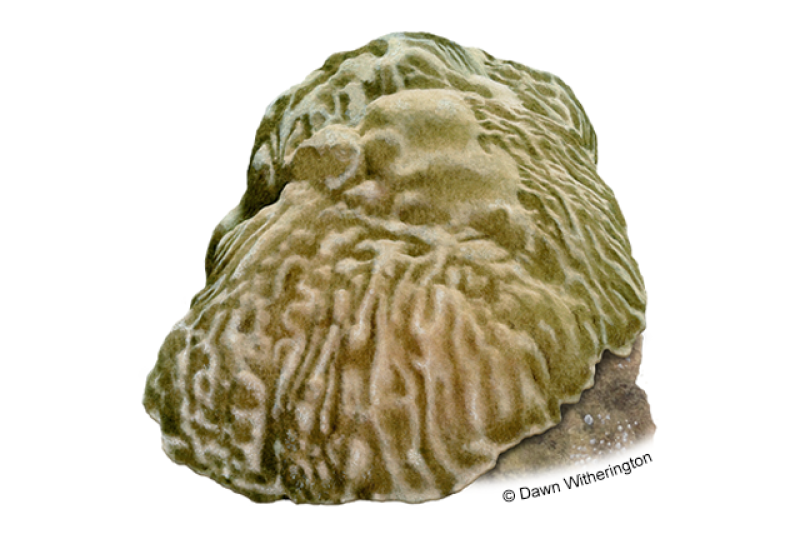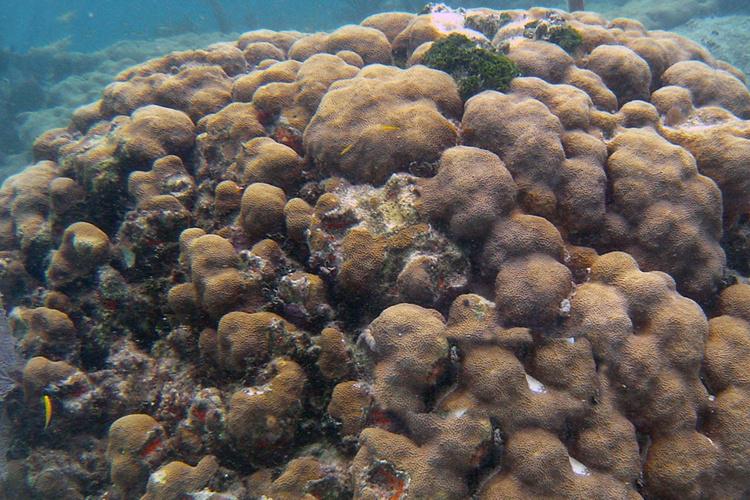 Lobed star coral. Credit: NOAA Fisheries
Lobed star coral. Credit: NOAA Fisheries
Lobed star coral. Credit: NOAA Fisheries
About the Species
 Lobed star coral. Credit: NOAA Fisheries
Lobed star coral. Credit: NOAA Fisheries
Lobed star coral. Credit: NOAA Fisheries
Lobed star coral, along with mountainous star coral and boulder star coral, make up the star coral species complex. The species complex was considered a single species with growth forms ranging from columns, to massive boulders, to plates but was split into three separate species in the early 1990s. The three species were differentiated on the basis of growth form, depth range, ecology, and behavior.
The species complex was historically one of the primary builders of reef framework in the Caribbean. It was once dominant on Caribbean coral reefs, characterizing the so-called “buttress zone.” However, it began to dramatically decline in the 1990s and 2000s. The greatest threats to lobed star coral are disease and ocean warming, which causes the corals to release the algae that live in their tissue and provide them food, usually causing death. Other threats to lobed star coral are ocean acidification (decrease in water pH caused by increased carbon dioxide in the atmosphere) that makes it harder for them to build their skeleton, unsustainable fishing practices that deplete the herbivores (animals that feed on plants) that keep the reef clean, and land-based sources of pollution that impacts the clear, low nutrient waters in which they thrive.
Lobed star coral is listed as threatened under the Endangered Species Act. NOAA Fisheries is committed to conserving and protecting lobed star coral. Our scientists and partners use a variety of innovative techniques to study, learn more about, and protect this species.
Population Status
Lobed star coral is common on Caribbean coral reefs but began to dramatically decline in the 1990s and 2000s, primarily from bleaching and disease. Over time there has been a shift from large colonies of this species to smaller colonies due to partial mortality resulting in shrinkage and disconnection of living tissue. Slow colony growth and extremely low successful reproduction limit the ability of lobed star coral to recover.
Where They Live
Lobed star coral can be found in the Caribbean Sea, Gulf of America (formerly Gulf of Mexico), and southern Atlantic (southern Florida). The northern extent of the range in the Atlantic Ocean is Palm Beach County, Florida. Lobed star coral occupies most reef environments and has been reported from water depths ranging from 0.5 to 20 m, with the species complex reported to 90 m. NOAA Fisheries has designated six critical areas determined to provide critical recruitment habitat for lobed star corals off the coast of Florida, the islands of Puerto Rico, the U.S. Virgin Islands, and Navassa, and in the Flower Garden Banks off the coast of Texas.
 World map providing approximate representation of the Lobed star coral's range.
World map providing approximate representation of the Lobed star coral's range.
Lifespan & Reproduction
Lobed star coral reaches reproductive maturity at about 10 cm in size. It is a hermaphroditic broadcast spawner, meaning colonies produce both eggs and sperm and release them into the water for fertilization and development. Lobed star coral sexually reproduces once per year several nights following the full moon in late summer. Fertilized eggs develop into larvae that settle on hard surfaces and form new colonies. Growth rates are slow, generally about 1 cm per year. Colonies can live for hundreds of years.
Scientific Classification
| Animalia |
Cnidaria |
Anthozoa |
Scleractinia |
Merulinidae |
Orbicella |
annularis |
Last updated by NOAA Fisheries on 09/11/2025
